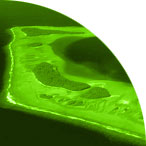Once priorities are set, the gap analysis is complete. But it is only worth doing if it leads to developing one or more scenarios for expansion of the protected area network taking into account:
- Size and location of new protected areas: possibly with linking habitats (corridors and buffer zones). Decisions will be made on the basis of priorities, opportunities and capacity.
- Management objectives for protected areas: varying from strict protection to cultural landscapes with human communities. All have their role, but are not equally applicable to all conservation needs. IUCN identifies six categories of management objectives that can help to plan protected area networks.
- Governance structures for the protected areas: who owns or manages the protected areas – can influence if communities support or oppose protection. Most governments still rely mainly on state-owned protected areas, but many other options exist, including various forms of co-management, private protected areas and community conserved areas.
- Opportunities for conservation outside protected areas: biodiversity may be conserved outside protected areas, if management is effective and secure.
- Opportunities to use restoration as a tool: sometimes this will just mean encouraging natural regeneration. In other cases active intervention is needed.













 download
download